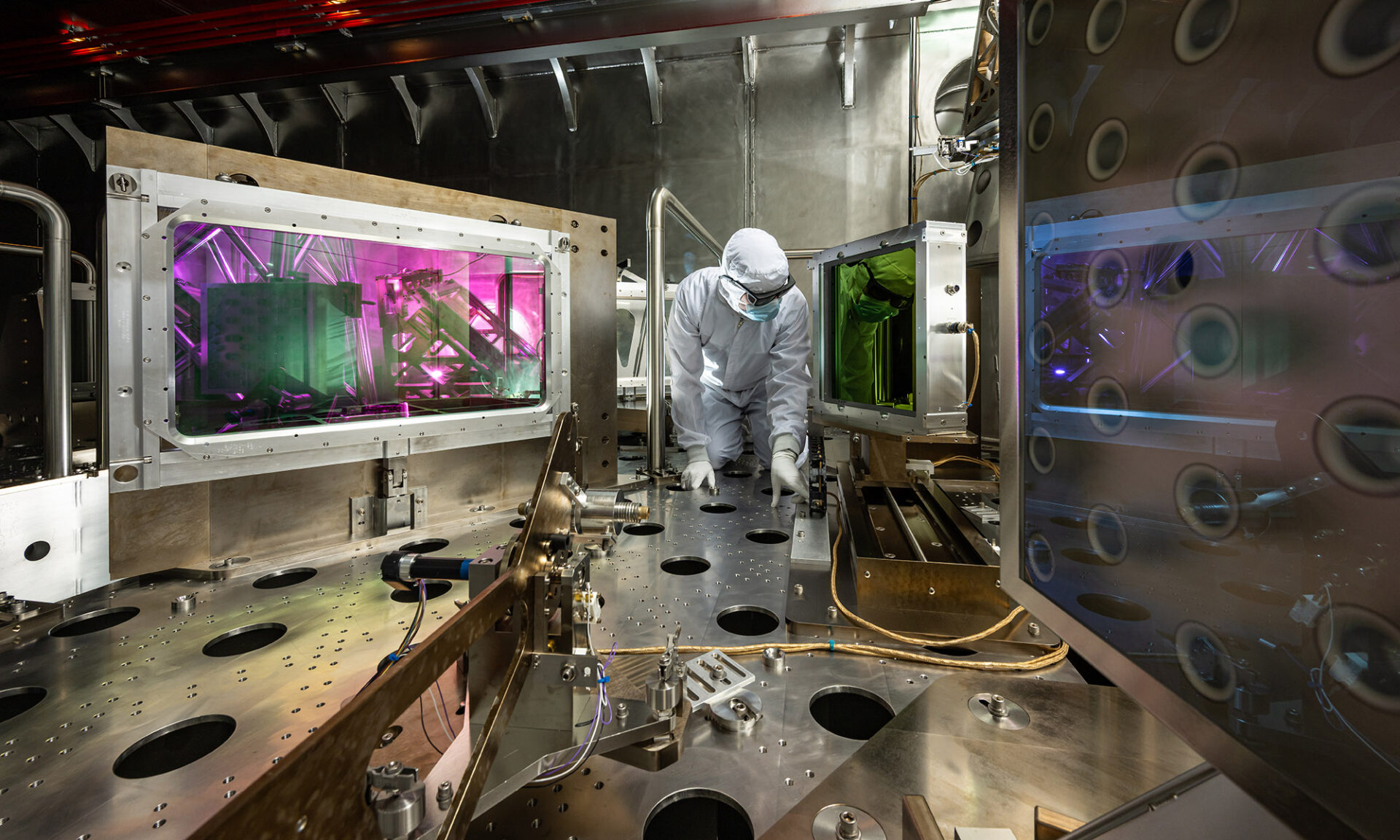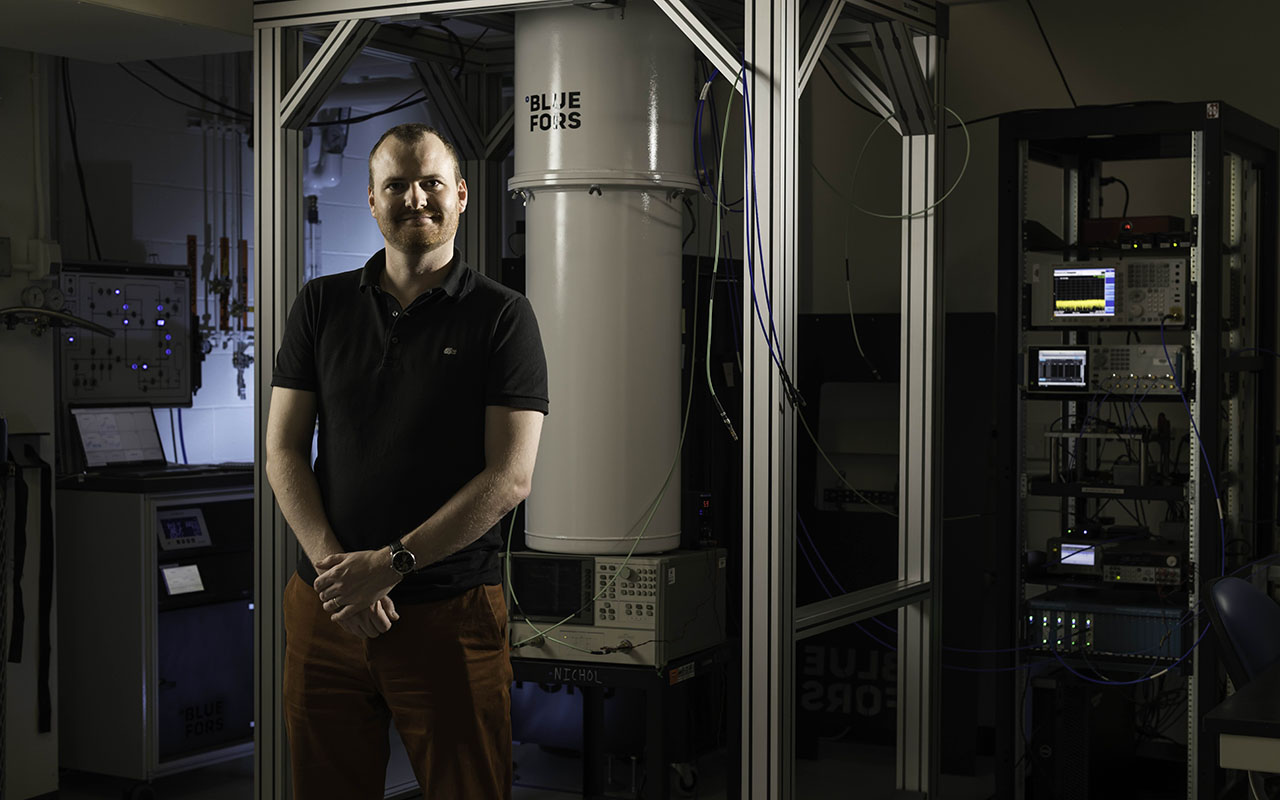The National Science Foundation recognizes the Rochester/Finger Lakes region as a potential hub for laser science and development.
The National Science Foundation Regional Innovation Engines (NSF Engines) program announced that a Rochester and Finger Lakes region coalition led by the University of Rochester advanced to the final stage of the program’s second competition.
The STELLAR (Science, Technology and Engineering of Laser and Laser Applications Research) project aims to progress the region as a national leader in laser technologies, education, company creation, manufacturing, and workforce development. Already home to more than 150 optics, photonics, imaging, and laser companies and suppliers employing more than 20,000 people, STELLAR’s organizers believe the Rochester and Finger Lakes region is well-positioned to lead the country in the development of next-generation lasers.
The project’s key partners include the University of Rochester’s Institute of Optics and Laboratory for Laser Energetics, Monroe Community College, Rochester Institute of Technology, Nextcorps, Luminate, Greater Rochester Enterprise, AmeriCOM, and New York State.
Leading the effort is Thomas Brown, the director of the Institute of Optics, and Jonathan Zuegel, laser and materials technology division director and a distinguished scientist at the Laboratory for Laser Energetics.
“Investing in STELLAR will help improve the country’s competitiveness in laser science, technology, and engineering and provide US-based sources of next-generation lasers for scientific, industrial manufacturing, energy, biomedical, and national security applications,” says Brown. “Together with an outstanding group of collaborators, we aim to build on Rochester’s rich history of innovation and education in optics, photonics, and imaging technology.”
Laser products are essential in a wide range of fields, including manufacturing, communications, inspection, environment sensing, defense, and security systems. But as Brown and Zuegel note, the manufacturing and packaging of lasers are increasingly being carried out overseas. At the same time, there’s a shortage of skilled workers in the optics and photonics industry, according to the International Society for Optics and Photonics.
If funded, STELLAR would develop a manufacturing ecosystem for lasers, provide critical research and development support for growing companies, and help teachers from middle school through all levels of college develop curricula to help students learn skilled trades in laser systems.
Narrowing the field
Work planning STELLAR formally began in 2023, when NSF awarded the University of Rochester a $1 million Regional Innovation Engines Development Award grant. By early summer 2024, NSF received nearly 300 letters of intent in response to the second NSF Engines funding opportunity, which it has since narrowed to just 15 finalists, including STELLAR. NSF anticipates announcing the NSF Engines awards resulting from the current competition in early 2026.
“The STELLAR Engine leverages our region’s strengths in optics, photonics, imaging, and lasers and helps position it as a hub for laser innovation, talent, and technologies to enhance our national competitiveness and local economic vitality,” says University of Rochester President Sarah Mangelsdorf. “Being named a finalist is an exciting next step for the University and our public and private partners, all of whom have been extremely supportive of this strategic initiative that aims to grow Western New York’s leadership in advanced laser technologies. STELLAR holds tremendous potential for job growth and investment into our region, as well as securing US leadership in these important areas. On behalf of our partners and collaborators in this effort, I want to thank the National Science Foundation and our elected officials for supporting the alliance in this incredible opportunity.”
During the next stage, NSF will conduct in-depth in-person interviews and due diligence with the finalist teams to further assess risks, resources, and a given team’s ability to adapt to changing circumstances. The role of the NSF Engines applicants’ partners will be a key component of the selection process at this stage.
“STELLAR represents the hard work, collaboration, and innovative spirit of our faculty, researchers, and partners who all together are advancing next-level knowledge and applications in optics, photonics, imaging, and lasers,” says Vice President for Research Stephen Dewhurst. “The Rochester region is world-renowned for this expertise, and we are extremely proud to be at this point of a very competitive national competition. We look forward to hosting a site visit in Rochester where we can further demonstrate the tremendous promise that STELLAR holds to lead the future of laser science and technology, both locally and throughout the world.”
An interactive map showing the 15 finalists is available on the NSF website.
Government officials voice their support
US Senator Charles Schumer: “Rochester is advancing in the nationwide contest to become one of the hubs for the cutting-edge laser technology that will define America’s future. I created the NSF Regional Innovation Engines program in my CHIPS & Science Law with Upstate NY’s world-renowned universities and innovation ecosystem in mind. I’m thrilled to see the University of Rochester and its many partners reach the final round of the competition for major federal investment to boost American laser innovation and grow new jobs and businesses across the Rochester Finger Lakes region. The astonishing scientific advancements being made at Rochester are recognized across the world and are vital to building America’s future. This is an exciting moment for the Rochester/Finger Lakes region, and I will continue to fight to bring new federal investment to advance this cutting-edge work.”
US Senator Kirsten Gillibrand: “I am pleased that the University of Rochester’s STELLAR proposal has been selected as a finalist in the NSF Regional Innovation Engines competition. The Rochester-Finger Lakes region is renowned for its legacy of advanced manufacturing, and the STELLAR proposal aims to build on that history and cement the region as a leader in laser technologies.Laser technologies play a critical role in manufacturing and defense, and STELLAR would help complement the existing Buffalo-Rochester-Syracuse Tech Hub designation I was proud to fight for. I look forward to seeing this proposal advance through the competition and extend my congratulations to the University of Rochester once again on reaching this phase.”
Congressman Joe Morelle: “Rochester is a premier hub for optics, photonics, imaging, and lasers, and the University of Rochester’s STELLAR Engine is one of the brightest examples of that innovation. I’m proud to see STELLAR named a finalist for designation as a National Science Foundation Regional Innovation Engine, a program I helped establish through the CHIPS and Science Act. Congratulations to my friend Professor Tom Brown and the entire team—I look forward to celebrating STELLAR’s recognition as a fully funded Innovation Engine very soon.”
Congresswoman Claudia Tenney: “The announcement of the University of Rochester’s STELLAR initiative as a finalist is important step for both our region and our nation. For generations, Rochester has led the way in optics and lasers, and this project builds on that tradition by uniting higher education, industry leaders, and workforce partners. This project would drive regional job creation, expand opportunities for students and workers in Upstate New York, and ensure the United States remains competitive and secure in a rapidly changing global economy.”
Congressman Nick Langworthy: “I’m proud to see the University of Rochester named one of just 15 finalists in the second Regional Innovation Engines competition. The Science, Technology and Engineering of Lasers and Laser Applications Research (STELLAR) initiative is a bold vision that builds on our region’s long tradition of excellence in optics and laser technology, pushing it to the forefront of manufacturing and research. From over 300 original letters of intent, this recognition highlights the strength of our talent and the ability to deliver on such an ambitious proposal. As a strong advocate here in Washington for the University of Rochester’s cutting-edge work in laser technology, I wish the University and all its partners the best as they advance to the next round.”





